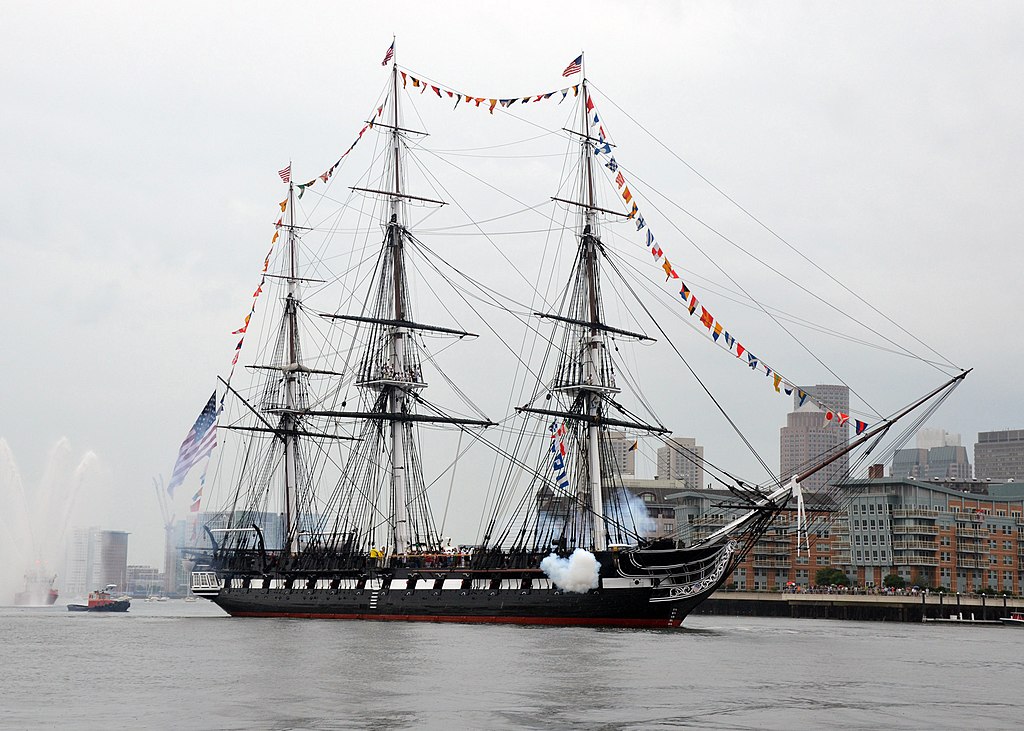They’re the oldest and the most recognized armored division in the Army. The first division to see combat in Germany during WWII and the first mash-up of reconnaissance and cavalry units in all of Army history. Here’s everything you thought you knew but didn’t about America’s Tank Division.
Kentucky Wonders, Fire and Brimstone or Old Ironsides?
After the division was organized in 1940, commanding general Maj. Gen. Bruce Magruder was the division’s first commander. His friend, Gen. George Patton, had just named the 2nd Armored Division “Hell on Wheels,” and Magruder didn’t want to be left behind. So, he held a contest to find an appropriate nickname for the new division.
Over two hundred names were submitted, including “Kentucky Wonders” and “Fire and Brimstone.” Gen. Magruder hated all the names submitted and decided to take the weekend to find the best one. It just so happened he’d recently purchased a painting of the USS Constitution, whose nickname was, wait for it, Old Ironsides. It’s said that Magruder was impressed by the correlation between the Navy’s unwavering spirit during the war and his new division’s. It was then that he landed on the nickname Old Ironsides, and the name’s been the same ever since.
The first enemy contact was in North Africa, and it was rough.
Contrary to what many think, the Old Ironsides didn’t engage with the Germans as their first combat experience. Instead, they traveled to North Africa and participated in Operation Torch, part of the Allied Invasion.
Operation Torch was intended to draw Axis forces away from the Eastern Front and relieve pressure on the Soviet Union. It was a compromise between the US and British planners. The mission was planned as a pincer movement with the Old Ironsides landing on Morocco’s Atlantic coast. The primary objective for the Old Ironsides was to work toward securing bridgeheads for opening a second front to the rear of German and Italian forces. Allied soldiers experienced unexpected resistance from Vichy-French units, but the Old Ironsides helped suppress all resistance and were heading toward Tunisia within three days.
The invasion of Africa helped win the war
The invasion of North Africa accomplished a great deal for the Allies since American and British forces finally had the offensive against the Germans and Italians. For the first time, US and UK directives were able to dictate the tempo of events. Forced to fight on both the western and eastern fronts, the German-Italian forces had the additional burden of having to plan and prepare for attacks in North Africa.
However, the harsh conditions of North Africa were quick teachers for the new Old Ironsides soldiers. In February 1943, the Old Ironsides met a better trained German armored force at Kasserine Pass, and the division sustained heavy losses in both service members and equipment.
The division was forced to withdraw, but the Old Ironsides used their retreat time to review the battle and prepare for the next one. After three more months of hard fighting, the Allies claimed victory in North Africa.
The Old Ironsides were recognized publicly for their efforts and then moved to Naples to support Allied forces there.
The Infamous Winter Line Attack
As part of the 5th Army, the 1st Armored Division took part in the attack on the Winter Line in November 1943. Old Ironsides flanked Axis forces in the landings at Anzio and then participated in the liberation of Rome in June. The unit continued to serve in the Italian Campaign until German forces surrendered in May 1945. One month later, Old Ironsides was moved to Germany as part of the US occupation forces stationed there.

WWII to present
In the drawdown after WWII, the 1st Armored Division was deactivated in 1946 but was then reactivated in 1951 at Fort Hood, where it was the first Army unit to field the new M48 Patton tank. Currently, the unit home is Fort Bliss, Texas, but it previously was housed at Baumholder, Germany. With the relocation, the unit went from roughly 9,000 soldiers to more than 34,000.
In 2019, the 1st Stryker Brigade Combat Team turned its smaller vehicles in for Abrams tanks and Bradley Fighting Vehicles.


